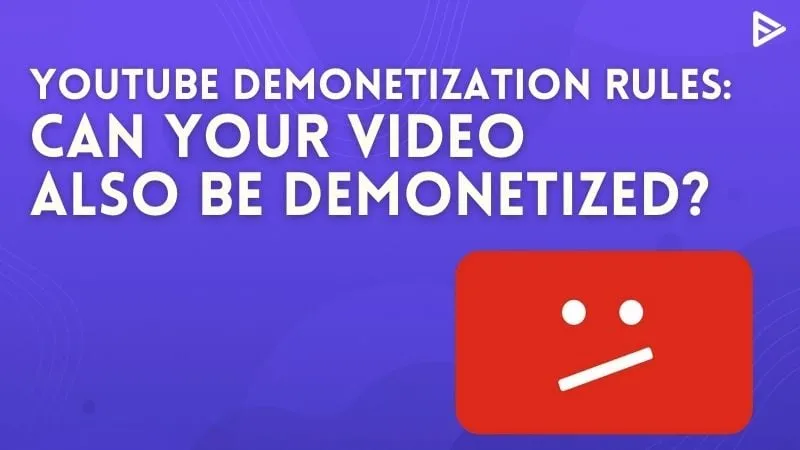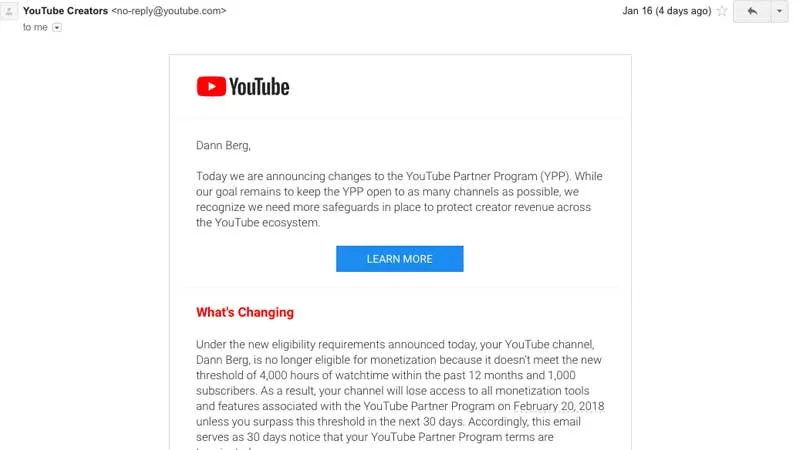YouTube monetization is an essential aspect for creators looking to turn their passion for video-making into a viable source of income. Essentially, monetization allows creators to earn money from their content through advertisements, channel memberships, and more. With millions of users consuming video content daily, YouTube has become a lucrative platform for many.
To start monetizing, creators must meet certain eligibility criteria set by YouTube. This includes having at least 1,000 subscribers and 4,000 watch hours in the past 12 months. Once these thresholds are met, creators can apply for the YouTube Partner Program (YPP), unlocking various monetization features.
Once approved, creators can earn revenue through:
- Ad Revenue: Money earned from ads displayed before, during, or after videos.
- Channel Memberships: Viewers pay a monthly fee for exclusive benefits.
- Super Chat and Super Stickers: Fans can pay to have their messages highlighted during live chats.
- Merchandise Shelf: Creators can showcase their products directly on their channel.
However, with the potential for earnings comes the responsibility of adhering to YouTube's community guidelines and monetization policies. Violating these rules can lead to demonetization, which can significantly impact a creator's income and reach. Understanding the nuances of YouTube monetization is crucial for any aspiring creator.
What Does Demonetization Mean?

Demonetization on YouTube refers to the process of disabling monetization features on a creator’s videos or channel. This can happen for various reasons, but it ultimately means that the creator will no longer earn ad revenue from their content. For many creators, this can be a significant blow, especially if their income relies heavily on YouTube.
So, what triggers demonetization? Here’s a quick overview:
- Violating Community Guidelines: Content that goes against YouTube's community standards, such as hate speech, graphic violence, or harassment.
- COPYRIGHT Issues: Using copyrighted material without permission can lead to videos being demonetized.
- Inappropriate Content: Videos that contain adult themes, nudity, or excessive profanity may be flagged.
- Misleading Metadata: Using deceptive titles, tags, or thumbnails to attract views can also result in demonetization.
When a video is demonetized, creators can receive a notification explaining the reason. They may have the option to appeal the decision, but this process can be complex and time-consuming. It’s essential for creators to stay informed about YouTube's constantly evolving policies to avoid the risk of losing monetization. Understanding the concept of demonetization is vital for anyone serious about establishing a sustainable YouTube career.
Also Read This: How to Use iTunes on iPhone to Sync, Transfer, and Manage Content with Ease
Common Reasons for Demonetization

Demonetization on YouTube can be a creator's worst nightmare, and understanding the common reasons behind it is crucial for anyone looking to maintain a steady income from their videos. Here are some of the most frequent culprits:
- Inappropriate Content: YouTube has strict guidelines regarding content that is considered inappropriate. This includes anything that depicts violence, hate speech, adult content, or anything that could be deemed offensive. If your video crosses these lines, it’s likely to be demonetized.
- Copyright Issues: Using copyrighted music, video clips, or images without permission can lead to immediate demonetization. Always ensure you have the rights to use any third-party content, or opt for royalty-free materials.
- Misleading Information: If your video is found to contain misleading or false information, especially regarding sensitive topics like health or finance, it can be flagged and demonetized.
- Infringing Community Guidelines: YouTube has a set of community guidelines that all creators must adhere to. Breaking these rules, even inadvertently, can result in demonetization.
- Excessive Profanity: While some swearing might be acceptable, excessive use of profanity can trigger demonetization. YouTube’s algorithm is quite sensitive to language used in videos.
Understanding these reasons can help you navigate your content creation journey, ensuring you stay within YouTube’s guidelines and keep your revenue flowing.
Also Read This: Effective Messaging Strategies for Connecting with Recruiters on LinkedIn
The Impact of Demonetization on Creators
The impact of demonetization on creators can be profound, affecting their income, mental health, and creative freedom. Let's break down some of the key effects:
- Loss of Income: The most immediate effect of demonetization is the loss of advertising revenue. For many creators, this income is essential for funding their projects and supporting their livelihoods.
- Increased Stress: The uncertainty of whether a video will be demonetized can lead to significant stress for creators. This anxiety can stifle creativity and make it difficult to produce content consistently.
- Content Censorship: To avoid demonetization, many creators feel pressured to censor their content or avoid certain topics altogether. This can limit their ability to express themselves freely and lead to a homogenization of content on the platform.
- Shift to Alternative Revenue Streams: Some creators turn to sponsorships, merchandise sales, or crowdfunding to compensate for lost ad revenue. While this can be a viable solution, it often requires a significant amount of additional work and marketing.
- Community Impact: Demonetization can also affect the creator's community. When a creator struggles financially, it can impact the type of content they produce, ultimately affecting the audience's experience.
In a nutshell, demonetization is more than just a financial blow; it can change the entire landscape of a creator's career on YouTube.
Also Read This: How to Download YouTube Videos for Free
How to Avoid Demonetization on Your Channel
So, you want to keep your YouTube channel thriving and avoid the dreaded demonetization. It can be tricky, but with a few simple strategies, you can help ensure your content stays advertiser-friendly. Here are some tips to keep in mind:
- Know YouTube's Policies: Familiarize yourself with YouTube's Community Guidelines and Advertiser Policies. Understanding what’s acceptable and what’s not is crucial.
- Focus on Quality Content: Create high-quality videos that provide value to your audience. Content that is engaging, informative, and entertaining is less likely to be flagged.
- Avoid Controversial Topics: Steer clear of sensitive subjects, including hate speech, violence, or adult content. If you’re unsure, it’s better to play it safe.
- Use Appropriate Language: Refrain from using profanity or offensive language. Clean, friendly language will make your videos more appealing to advertisers.
- Check Music and Media Rights: Make sure you have the rights to any music, images, or video clips you use. Copyrighted material can lead to demonetization.
- Engage with Your Audience: Build a community around your channel. Respond to comments and keep your audience engaged, which can help improve your channel’s reputation.
By implementing these strategies, you can significantly reduce the risk of demonetization and create a stable revenue stream from your YouTube channel.
Conclusion: Navigating YouTube's Monetization Landscape
As we’ve explored, navigating YouTube’s monetization landscape can feel daunting at times, especially with the constant changes in policies and guidelines. However, understanding the rules and proactively managing your content can make a world of difference.
To wrap things up:
- Stay Informed: Regularly check for updates on YouTube’s monetization policies. Being informed will help you adapt quickly to any changes.
- Prioritize Audience Engagement: Building a loyal community not only enhances your content but also boosts your credibility with advertisers.
- Be Patient: Growing a channel and achieving stable monetization takes time. Don’t get discouraged by setbacks; learn from them instead.
Ultimately, by focusing on creating quality content and adhering to YouTube’s guidelines, you can set your channel up for success. Remember, the platform is constantly evolving, so staying adaptable and committed will be your best strategy in this ever-changing landscape.